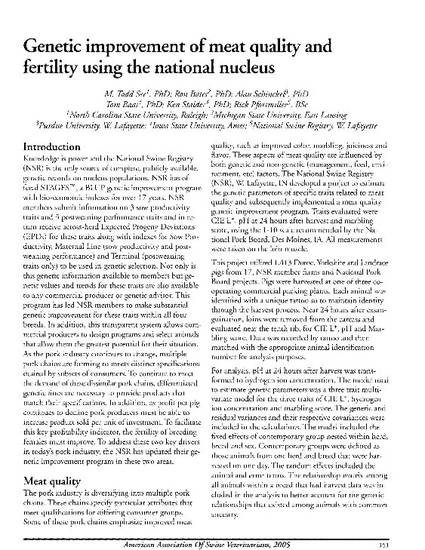
Knowledge is power and the National Swine Registry (NSR) is the only source of complete, publicly available, genetic records on nucleus populations. NSR has offered STAGES"', a BLUP genetic improvement program with bio-economic indexes for over 17 years. NSR members submit information on 3 sow productivity traits and 3 postweaning performance traits and in return receive across-herd Expected Progeny Deviations (EPDs) for these traits along with indexes for Sow Productivity, Maternal Line (sow productivity and postweaning performance) and Terminal (postweaning traits only) to be used in genetic selection. Not only is this genetic information available to members but genetic values and trends for these traits are also available to any commercial producer or genetic advisor. This program has led NSR members to make substantial genetic improvement for these traits within all four breeds. In addition, this transparent system allows commercial producers to design programs and select animals that allow them the greatest potential for their situation. As the pork industry continues ro change, multiple pork chains are forming to meets distinct specifications desired by subsets of consumers. To continue to meet the demand of these dissimilar pork chains, differentiated genetic lines are necessary to provide products that match their specifications. In addition, as profit per pig continues to decline pork producers must be able to increase product sold per unit of investment. To facilitate this key profitability indicator, the fertility of breeding females must improve. To address these two key drivers in today's pork industry, the NSR has updated their genetic improvement program in these two areas.
Available at: http://works.bepress.com/kenneth_stalder/226/

This proceeding was published as See, M. T., R. Bates, A. Schinckel, T. Baas, K. Stalder, R. Pfortmiller. 2005. Genetic improvement of meat quality and fertility using the national nucleus. Proc. 36th Ann. Meeting Amer. Assoc. Swine. Vet. Toronto, Canada. March 5-8, 2005, pp. 151-153.